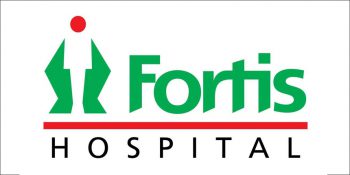Bone Marrow Transplant Cost in India
In India, the cost of Allogeneic Transplant starts from USD 25,000 to USD 28,000 and for Autologous Transplant the cost may vary from USD 18,400 to USD 21,000.
The cost of treatment may also differ from one hospital to another depending upon the infrastructure, test facilities, and surgeon, etc. Accommodation can b arranged in the hotels and guest houses located near to the hospitals and the cost may vary from USD 25-100 depending upon the patient’s choices.
Best Bone Marrow Transplant Hospitals in India

BLK Speciality Hospital
Hospital Overview Dr. B L Kapur, an eminent Obstetrician and Gynaecologist, set up a Charitable Hospital in 1930 at Lahore. In 1947, he moved …
Read more
Fortis Hospital
Hospital Overview Fortis Healthcare Limited is a leading integrated healthcare delivery service provider in India. The healthcare verticals of …
Read more
Artemis Hospital
Hospital Overview Artemis Hospital, established in 2007, spread across 9 acres, is a 400 plus bed; state-of-the-art multi-speciality hospital …
Read moreBone Marrow Transplant
Bone marrow transplant is a procedure to replace damaged or destroyed bone marrow with healthy bone marrow stem cells. Bone marrow is the soft, fatty tissue inside your bones. The bone marrow produces blood cells. Stem cells are immature cells in the bone marrow that give rise to all of your different blood cells.
The soft, gelatinous tissue filling the medullary cavities at the centers of bones containing immature cells called the stem cells is known as the Bone Marrow. There are two types of bone marrow, Yellow Bone Marrow also known as Fatty Tissue and Red Bone Marrow also known as Myeloid Tissue. The majority of red blood cells, platelets, and most of the white blood cells are formed in the red marrow while only a few of them are formed in the yellow marrow.
It is important for:
- Circulatory System
- Haemoglobin
- Iron
- Red Blood Cells
- White Blood Cells
- Lymphatic System
- Immune System
Why is it Needed?
The goal of it is to cure many diseases and types of cancer. When the doses of chemotherapy or radiation needed to cure a cancer are so high that a person’s bone marrow stem cells will be permanently damaged or destroyed by the treatment, a bone marrow transplant may be needed. It may also be needed if the bone marrow has been destroyed by a disease.
What are some diseases that may benefit from this transplant? The following diseases are the ones that most commonly benefits are:
- Leukemias
- Severe aplastic anemia
- Lymphomas
- Multiple myeloma
- Immune deficiency disorders
- Some solid-tumor cancers
However, patients experience diseases differently, and bone marrow transplant may not be appropriate for everyone who suffers from these diseases.
Different procedures for Bone Marrow Transplant
It’s carried out for three reasons:
a) To destroy the existing bone marrow cells to make room for the transplanted tissue
b) To destroy any existing cancer cells
c) To stop your immune system working, this reduces the risk of the transplant being rejected.
The conditioning process usually takes between four and seven days.

